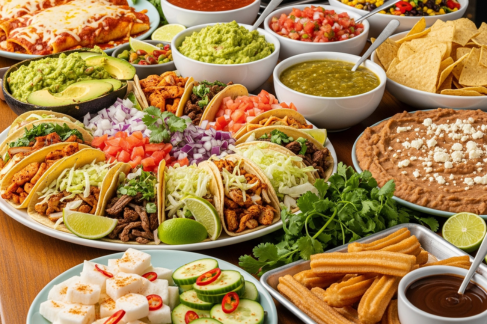In the world of food, we’re always looking for new and exciting ingredients to elevate our meals. What if I told you that the secret ingredient for your next gourmet dish might be something unexpected—like crickets, mealworms, or grasshoppers?
Yes, edible insects are not just for human survival or adventurous eaters; they could soon become a staple in high-end kitchens.
Let’s explore how edible insects for humans could take your culinary game to a whole new level.
Why Edible Insects Are Gaining Popularity
As humans, eating edible insects might sound unusual, but they’ve been a staple in many traditional diets for centuries. With the world grappling with climate change and food insecurity, insects present a promising solution to our growing food challenges
- Sustainability: Insects require far fewer resources to produce than traditional livestock.
- Nutritional Powerhouses: Packed with protein, vitamins, and healthy fats.
- Versatility: They can be cooked in a variety of ways, from crunchy snacks to delicious main dishes.
What’s The Gourmet Potential Of Edible Insects?
While insects might seem like an odd ingredient, they bring unique flavors and textures that chefs are beginning to embrace. When prepared correctly, edible insects can add a surprising twist to your gourmet meals.
Here’s how insects can elevate your next dish:
1. Crunch and Texture
Insects like crickets and grasshoppers have a natural crunch that can add an interesting texture to dishes. Think of them as the perfect substitute for crispy bacon bits or croutons. Sprinkle some roasted crickets over a salad, and you’ll have a delightful crunch that complements the other ingredients.
2. Nutty, Earthy Flavors
Mealworms, for example, have a mild, nutty flavor that pairs well with earthy ingredients like mushrooms or root vegetables. When roasted, they take on a slightly smoky taste, adding depth to sauces, soups, or even pasta dishes.
3. Protein Boost
Insects are an excellent source of protein, offering a cleaner and leaner alternative to traditional meats. Incorporating crickets, which contain more protein per gram than beef, into a gourmet meal could provide a healthy protein punch without sacrificing flavor.
How To Cook With Edible Insects
So, how do you incorporate these insects into your gourmet cooking?
It’s easier than you think. Here are some ways to start experimenting with these fascinating ingredients:
- Cricket Flour: Cricket flour is a great way to sneak insects into your cooking without changing the texture of the dish. You can use it in baked goods like pancakes, cookies, or even pasta.
- Roasted Insects: Roasting insects brings out their natural flavors and can turn them into crispy toppings for salads, soups, or even gourmet pizza.
- Insect Protein Powders: These powders can be added to smoothies, energy bars, or soups. It’s an easy way to get the benefits of insects without the taste or texture.
- Insect-Infused Oils or Butters: If you’re feeling adventurous, try infusing oils or butters with crushed insects. This can add a subtle earthy flavor to your sauces or dishes.
Pro Tip:
Start small. If you’re new to cooking with insects, begin by adding insect flour or a small amount of roasted crickets to a dish you already enjoy. This will help you get used to the flavors without being overwhelmed.
Health Benefits of Edible Insects
Here are some reasons why you might want to consider adding them to your meals:
- High in Protein: Many insects are packed with protein, which helps in muscle repair and overall body function.
- Rich in Omega-3s: Some insects, like mealworms, are high in omega-3 fatty acids, which are great for heart health.
- Packed with Micronutrients: Insects are a great source of iron, zinc, and vitamins B12 and B2, which are essential for overall well-being.
Is Insect-Based Cuisine The Next Big Trend In Gourmet Dining?
You might be thinking, “Why would a top chef choose insects over more traditional gourmet ingredients?”
The answer lies in creativity and innovation.
Chefs are always on the lookout for new ways to push culinary boundaries, and edible insects are a natural next step in the search for unique, sustainable ingredients.
Restaurants in cities like New York, Los Angeles, and London have already started to feature insect-based dishes on their menus. From cricket tacos to mealworm risotto, edible insects for humans are slowly but surely making their mark in the culinary world.
These dishes are not just sustainable; they’re also an opportunity for chefs to experiment with flavors and textures in ways never seen before.
Final Thought
Incorporating edible insects into your next gourmet meal may seem bold, but it’s a great way to explore new flavors, textures, and nutrition. Whether using insect flour in baking or roasted crickets as a garnish, these tiny ingredients can elevate your dishes.
Give edible insects a try in your next meal – you might be surprised by how delicious and versatile they can be


